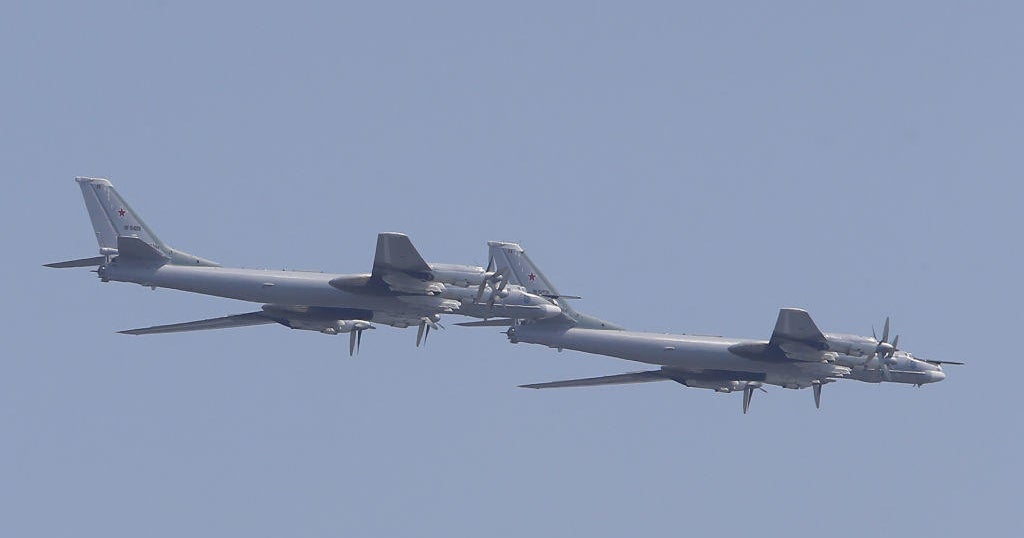China says its warplanes shadowed "trespassing" U.S. Navy spy plane over Taiwan Strait
The Chinese military on Wednesday said its warplanes shadowed a U.S. Navy surveillance aircraft as it flew over the Taiwan Strait, a waterway that runs between mainland China and Taiwan. Part of the South China Sea, the strait has become the subject of growing disputes, as China says the waterway is within its own jurisdiction, while the U.S. views it as international territory.
Army Senior Colonel Shi Yi, a spokesperson for the People's Liberation Army, criticized the U.S. Navy for flying the plane over the Taiwan Strait in a statement Wednesday, calling it a "provocative move" that was publicly "hyped," according to the Chinese military.
"The spokesperson said that the Chinese PLA Eastern Theater Command had organized warplanes to follow and monitor the trespassing US aircraft according to law and regulations," the military wrote in a news release. "The troops of the PLA Eastern Theater Command will remain on high alert at all times to resolutely safeguard China's sovereignty and security as well as regional peace and stability, stressed the spokesperson."
The U.S. Navy aircraft, a P-8A Poseidon spy jet, was developed by Boeing for maritime surveillance, search and rescue missions and anti-submarine warfare. The P-8A Poseidon is the military version of Boeing's 737 passenger jet, and it is the same model of aircraft that recently garnered international attention for overshooting a runway in Hawaii and subsequently getting stuck for weeks in a bay.
U.S. Navy officials announced the plane's transit over the Taiwan Strait on Wednesday, saying the aircraft traveled through international airspace.
"By operating within the Taiwan Strait in accordance with international law, the United States upholds the navigational rights and freedoms of all nations," the U.S. 7th Fleet, which is based in Japan, said in a statement. "The aircraft's transit of the Taiwan Strait demonstrates the United States' commitment to a free and open Indo-Pacific. The United States military flies, sails and operates anywhere international law allows."
It is not uncommon for China to send fighter planes to shadow, and, in some instances, intercept U.S. military aircraft and vessels in the region.
Last December, a Chinese fighter jet came within 20 feet of a U.S. Air Force jet flying over the South China Sea, U.S. military officials said at the time. The Air Force plane was forced to swerve to avoid a collision, according to the officials.
Then, in June, China's defense minister justified the decision to sail a warship across the path of an American destroyer and a Canadian frigate that were transiting the Taiwan Strait. The defense minister told a group of leading global defense officials gathered in Singapore that "freedom of navigation" patrols — like the ones often carried out by the U.S. military in what American officials and others see as lawfully shared international waters — are considered a provocation to China.
In that incident, the Chinese warship intercepted the USS Chung-Hoon and the HMCS Montreal as they moved through the strait between China and Taiwan, the Associated Press reported. The Chinese vessel overtook the American ship and then cut across its bow in an "unsafe manner" while just 150 yards away, according to the U.S. Indo-Pacific Command.
In October, the Pentagon declassified images and videos showing 15 separate incidents where Chinese jets performed "coercive and risky" maneuvers near U.S. jets in the Indo-Pacific region — sometimes at a distance of only 20 feet. The photos and video depicted a subset of what the Pentagon said was part of a "centralized and concerted campaign" by China to alter U.S. operations in that region.
—Eleanor Watson contributed reporting.




